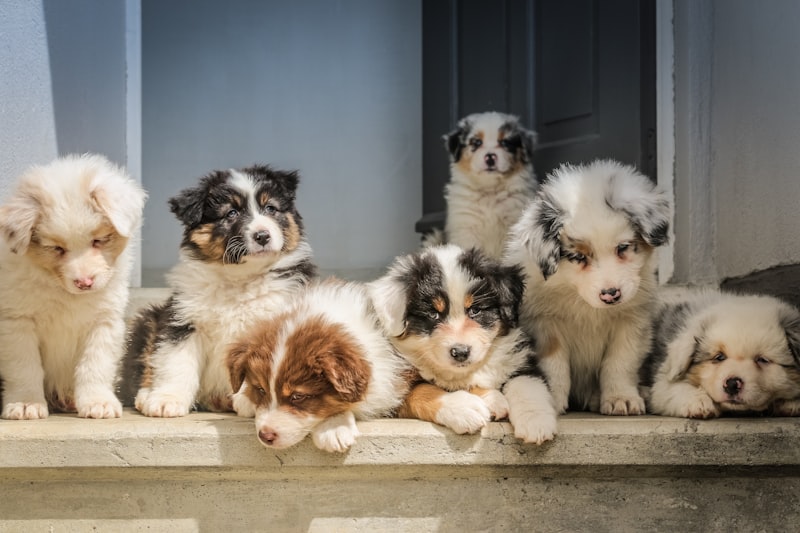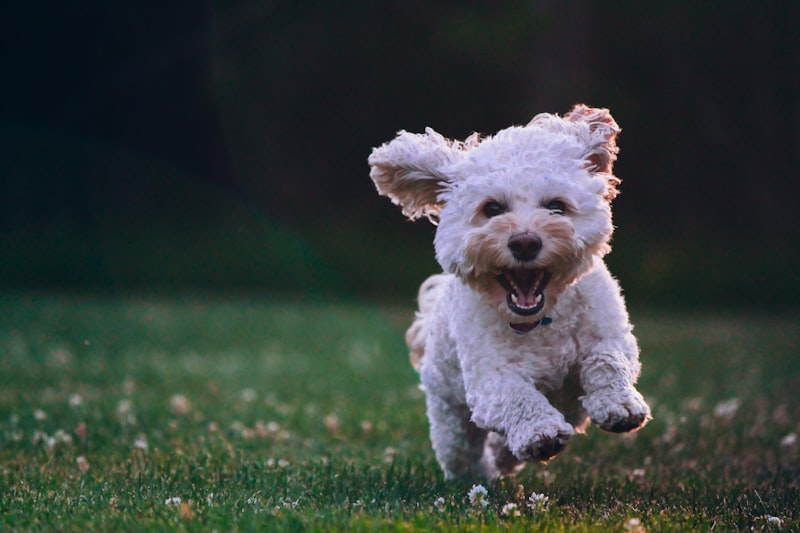Let’s get one thing straight—puppies are like toddlers. They’re eager to explore, super curious, and yes, they sometimes throw temper tantrums (or in this case, chew on your favorite shoes). The first step in puppy training is to establish a routine. Just like you wouldn’t go to a party without knowing the dress code, your puppy needs to know what’s expected of them. Consistent feeding, potty breaks, and playtime help them feel secure and understand their new environment.
Now, you might be wondering, “What’s the best way to train my puppy?” Positive reinforcement is your best friend! Imagine you’re trying to learn a dance routine. It’s easier when someone cheers you on, right? So, when your pup sits or comes when called, shower them with praise or a treat. This creates a vibe where your puppy associates good behavior with yummy snacks and happy vibes.
Start with the basics: sit, stay, and come. These foundational commands are like the ABCs of puppy language. Keep your training sessions short and sweet—maybe 5 to 10 minutes—like a quick coffee break on a busy day. Puppies have short attention spans, so a little fun goes a long way.
Finally, patience is key. Just because your pup doesn’t grasp “sit” on the first try doesn’t mean they won’t get it. Think of it as planting seeds; a little nurturing will yield a beautiful garden of well-mannered behavior. Enjoy the journey, and before you know it, you’ll both be ready for the next big adventure!
Puppy Training Basics: Turning Your New Furry Friend into a Model Canine Citizen!
First things first, consistency is key. Just like you wouldn’t water your plants one day and then ignore them the next, your puppy thrives on routine. Set a schedule for feeding, bathroom breaks, and playtime. It helps them feel secure and teaches them what to expect. And trust me, puppies are like little sponges, soaking up everything around them—active participation is vital!
Now, let’s chat about potty training. It’s not just about teaching them where to go; it’s about building trust and communication. You want your puppy to understand the difference between inside and outside. Take them outside frequently, especially after meals or when they wake up. When they do their business outside, celebrate! Honestly, it’s like winning a small lottery every time they go in the right spot.
Speaking of winning, let’s discuss positive reinforcement. Using treats, praise, or a cheerful “good puppy!” is an incredible way to reinforce good behaviors. It’s the doggy equivalent of giving high fives! They’re more likely to repeat behaviors when they associate them with something pleasant. Who doesn’t love a good reward?
Lastly, bear in mind that patience is your best ally. A puppy isn’t going to learn overnight. Think of it like learning to ride a bike—it takes practice, some wobbles, and probably a few tumbles to get the hang of it. So, let your little buddy enjoy the process, and soon you both will be cruising smoothly into canine citizenship!
From Puddles to Pawsitive Behaviors: Your Ultimate Guide to Puppy Training
First off, let’s talk about patience. Training a puppy is like teaching a toddler to tie their shoes—they’ve got enthusiasm but not quite the skill yet. Celebrate the small victories! Did your pup sit on command for the first time? Throw a mini party with treats and cheers! Positive reinforcement is a game-changer here. Just like how a pat on the back feels great after a job well done, your puppy thrives on praise and goodies.
Now, consistency is the name of the game. Puppies thrive on routine like humans thrive on coffee in the morning! Set specific times for feeding, potty breaks, and playtime. This structure helps them understand what’s expected. Plus, wouldn’t you want your pup to know it’s playtime when you grab that squeaky toy?

Socialization is another key factor. Think of it as sending your puppy to a puppy school where they make friends while learning good manners. Take them to parks, introduce them to other dogs, and let them explore new environments. This experience shapes their behavior and makes them more confident.
Top 10 Essential Commands Every Puppy Should Learn—Start Training Today!
First off, “Sit” is like hitting the pause button on that whirlwind moment. It teaches your pup to calm down—a valuable skill when the doorbell rings, or you’re enjoying some downtime. Next up, “Stay” gives you the superpower of keeping your pup in place. Imagine having a magical pause button—pretty neat, right?
Then there’s “Come”—it’s a lifeline in the park, turning a potential game of chase into a fun recall session. Now, “Down” isn’t just about lying down; it instills discipline and keeps your pup from jumping on guests like they’re long-lost friends.
Don’t forget “Leave it”—this command is a lifesaver when your furry friend finds something they shouldn’t munch on. It’s like having the ultimate shield against any unsanctioned snacking! “Heel” is your go-to for walks, ensuring your pup’s not leading you on a wild goose chase.
“Drop it” is crucial for retrieving toys, while “Watch me” helps build a strong focus, making it easier for your puppy to pay attention amidst distractions. “No” is essential, teaching boundaries, while “Okay” is the green light for fun, games, and treats.
Just like learning your ABCs, these commands form the groundwork for a well-behaved companion. Don’t put it off—start training today, and watch your puppy blossom into a well-rounded canine companion!
Discover the Secrets to Effective Puppy Training: Tips from Professional Trainers
First off, consistency is your best friend. Think of it like building a house; you wouldn’t lay the foundation on a wobbly surface, right? Establish clear rules and stick to them. If you want your pup to sit before meals, make sure everyone in your household is on board. Mixed messages can confuse your furry friend faster than a squirrel running up a tree.
Now, let’s talk rewards. Dogs are like enthusiastic kids; they love a good treat! Use positive reinforcement—favorite toys or tasty snacks—to encourage good behavior. Imagine you’re playing fetch; every time your pup brings the ball back, you shower them with praise. It’s a win-win!
And don’t forget about socialization. Introduce your puppy to different environments, people, and other pets. It’s like exposing them to a vibrant buffet of experiences—they’ll be more adaptable and less anxious. Plus, you’ll feel proud showing off your well-adjusted pooch at the dog park!
Lastly, patience is key. Training a puppy is like trying to soak up the sun on a cloudy day—sometimes you just need to wait for the right moment. Celebrate the small victories and remember that every little step counts. Before you know it, that little tornado will be transformed into the star of the neighborhood!
Puppy Training Myths Busted: What Every New Dog Parent Should Know
First off, you might’ve heard that you can’t train a puppy until they’re at least six months old. Not true! Puppies are little sponges, soaking up everything around them from the moment they wiggle into your life. Early training, like basic commands and potty training, can start as soon as you bring them home. Think of it like teaching a toddler—the earlier you start, the better foundations you build!
Another common myth is that puppies should only be trained using correction methods. Yikes! While some people swear by tough love, studies show that positive reinforcement is much more effective—and way more fun! Imagine rewarding your puppy with treats or praise instead of scolding them for mistakes. It’s like giving them a gold star for good behavior, making them eager to learn more.
And here’s a biggie: “My puppy will grow out of bad behavior.” Sorry, but that’s like hoping a toddler will tire of throwing tantrums just because they’re tired. Without proper training and guidance, those behaviors can stick around like an unwelcome guest. Instead, think of your training sessions as socializing parties where your puppy learns how to be a polite canine citizen!
Transforming Your Puppy into a Well-Behaved Companion: The Do’s and Don’ts of Training

First things first: consistency is your best friend. Imagine trying to solve a puzzle without all the pieces—confusing, right? That’s what it’s like for your puppy if you’re inconsistent with commands and rules. Pick a command, stick to it, and use it every time! If you say “sit,” don’t switch it up to “down” later. Keep things clear, and watch your pup start to connect the dots.
Positive reinforcement is your secret weapon. Think of it like giving a high-five for a job well done. When your puppy follows your command or behaves well, reward them with a treat, a toy, or a burst of affection. It’s like throwing a mini party every time they succeed! But beware the pitfalls: avoid punishment. Scolding or shouting only confuses and scares them. Instead, redirect their energy—if they’re chewing on your shoe, offer a suitable toy.
Socialization is key! Get your pup out and about; expose them to new sights, sounds, and, most importantly, other dogs. It’s like taking them on a world tour. Just remember, each outing should be a positive experience.






